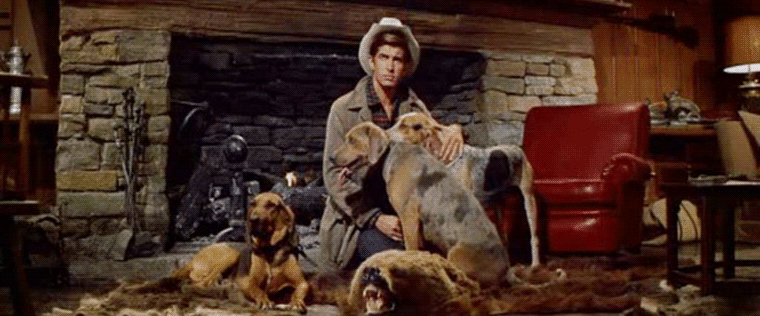Homage
Vincente Minnelli

|
For most film buffs, the name of director Vincente Minnelli immediately recalls the quintessence of the MGM musical of the 1940s and 1950s - a world of fantasy, brilliant colours, stylish décor and costumes - in which Fred Astaire, Judy Garland, Gene Kelly and Leslie Caron dance and sing. The name also evokes steamy dramas and civilised comedies such as Some Came Running (1959) and Father of the Bride, 1950) respectively. But it is worth pondering whether there is more to his oeuvre than meets the eye and whether Minnelli could make claim to being an auteur. Minnelli was the ne plus ultra of Hollywood studio directors. Out of his 33 features, all but three were made at Metro Goldwyn Mayer. No other director could claim such fidelity to a studio. In theory, most contract directors were subjugated to the studio's prevailing aesthetics and values. However, notwithstanding the omnipotent nature of the MGM producers, a few of the individual directors, like Minnelli, whom they employed, managed to stamp their unique personalities on almost everything they did. One doesn't have to be an auteur-didact to recognize the differences between, say, the MGM musicals of Stanley Donen and those of Minnelli. The latter could not have made On The Town (1949) or Seven Brides For Seven Brothers (1954); Donen could not have made Meet Me In St. Louis (1944) or Yolanda and the Thief (1945). In a sense, they lived in the same house, beautifully built and designed by MGM, but their separate rooms were vastly different. Minnelli's was exquisitely decorated with rich tapestry, antique furniture and heavy velvet curtains, while Donen's was uncluttered, light and airy, with open windows. What distinguished Minnelli from most of the other directors on the MGM roster was his mise-en-scene – his elegant compositions within an individual frame – the relation of objects and people, the interplay of light and dark, the pattern of colour. {niftybox background=#8FBC8F, width=360px} Two Weeks In Another Town was admired by Jean-Luc Godard who made Contempt (1963), his own movie of filmmaking in Italy, a year later. It included a homage to one of Minnelli's best melodramas, where Michel Piccoli, wearing a Stetson and smoking a cigar in the bath, says, 'I'm just imitating Dean Martin in Some Came Running.'{/niftybox} Significantly, for a studio contract director who usually took on most genres handed to him, Minnelli never made a Western, Sci-Fi, Horror, Gangster, War film or Film Noir. |
{niftybox background=#8FBC8F, width=360px} No other director could claim such fidelity to a studio. In theory, most contract directors were subjugated to the studio's prevailing aesthetics and values. However, notwithstanding the omnipotent nature of the MGM producers, a few of the individual directors, like Minnelli, whom they employed, managed to stamp their unique personalities on almost everything they did.{/niftybox} His films are divided strictly among Musicals, Melodramas and Romantic Comedies, all three more related to the theatre than other film genres. Formerly a window dresser for Marshall Field's department store in Chicago, Minnelli had worked on the New York stage as a set designer and director of ballets and musical reviews before Arthur Freed, the Diaghilev of the screen musical, asked him to come to Hollywood in 1941. A knowledge and taste for art and design imbue his films, and he was lucky to have worked during the golden age of three-tone Technicolor. Yolanda and the Thief is drenched in exotic colours and Fred Astaire dreams himself dancing in a Dali-Yves Tanguy landscape. The 18-minute ballet finale of An American in Paris (1951) is a series of tableaux dansantes based on French Impressionist and Post-Impressionist paintings with Gene Kelly at one moment in the posture of Lautrec's 'Chocolat'. Cyd Charisse dances against a Chagall-like backdrop in The Band Wagon (1953), and in the same film Fred Astaire's hotel room is bedecked with originals by Degas, Modigliani and Renoir, which are finally sold to finance a show. 'Those fellows loved the theatre,' explains Fred. Only the décor-conscious Minnelli could have made The Cobweb (1955), in which an argument about curtains in the reception room of a psychiatric clinic sparks off most of the tensions among patients and staff. The Cobweb also has the following dialogue: John Kerr: Red and green... Derain died last fall in a |

